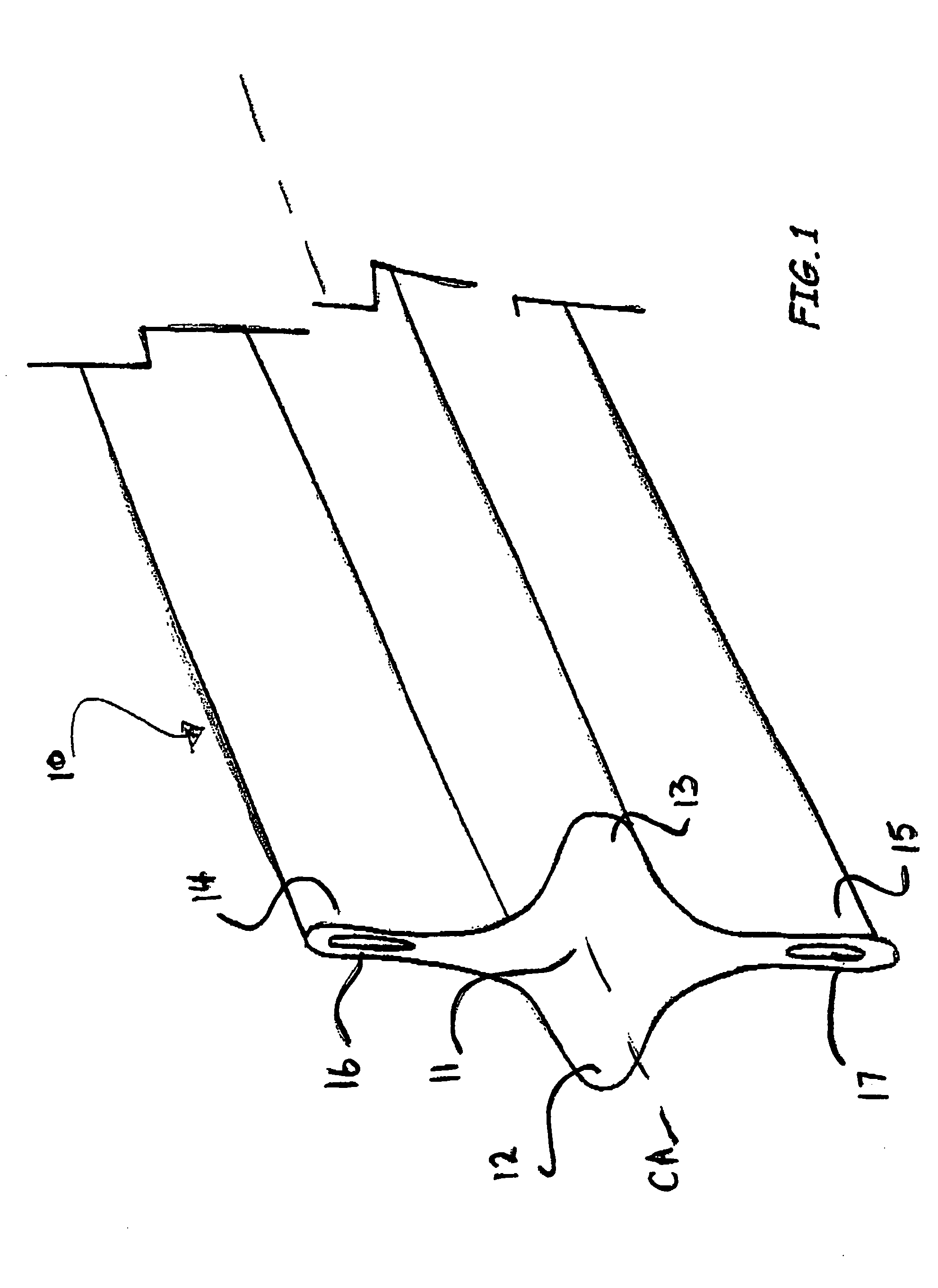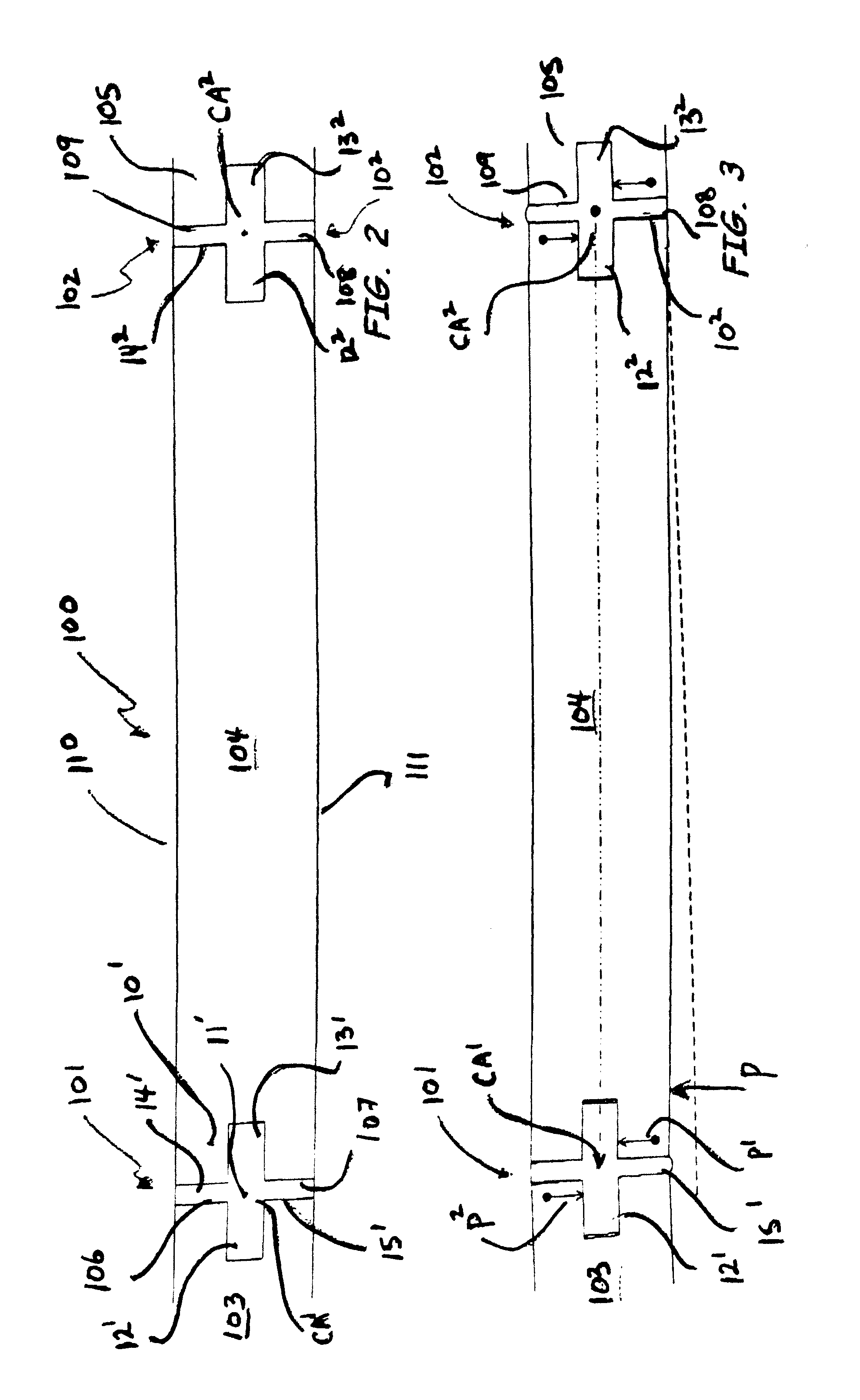Pavement joint
a pavement and jointing technology, applied in the direction of paving details, building insulations, building components, etc., can solve the problems of cracking of concrete, buckling and warping of pavement, and all of spalling and crushing of concrete, and achieve the effect of opening or creating a crack
- Summary
- Abstract
- Description
- Claims
- Application Information
AI Technical Summary
Benefits of technology
Problems solved by technology
Method used
Image
Examples
example 1 (
Rigid)
[0124]A full scale prototype concrete footpath was constructed at RMIT University, Melbourne, Australia. The prototype was 5 m long, 1.5 m wide and 75 mm thick. It was cast on a steel frame, designed in such a way that the formwork could be removed from underneath and so that the prototype could be jacked up from virtually any point— to simulate various scenarios of tree root invasion and soil expansion / movement. Four joint members made from rigid PVC were installed in the footpath. They were 1.5 m apart from each other thus dividing the footpath into three 1.5 m long slabs, plus two 250 mm long end slabs. The ends of the footpath were restrained by steel angles. The cross-sectional shape of the joint member was substantially as the same as shown in FIG. 4.
[0125]The prototype was cast using concrete with a nominal strength of 40 MPa. Prior to casting, the slump of the concrete was measured at 90 mm. All tests were conducted after the cylinder strength of concrete of slabs exce...
example 2 (
Flexible)
[0132]A full scale prototype concrete footpath similar to that described in Example 1 was constructed at RMIT University, Melbourne, Australia. Four joint members made from EPDM (Ethylene Propylene Diene Monomer) rubber were installed at the same spacings as Example 1. Their shape was substantially as shown in FIG. 1. All tests were conducted after the concrete had been cured for more than 28 days. The 28 day mean compressive strength of the concrete was 21.2 MPa.
[0133]A series of tests similar to those described in Example 1 was carried out. In the first, the concrete slabs were jacked up from the bottom of Slab 2 along line AB (refer to FIG. 18). No additional load was applied to any of the slabs. The maximum average differential displacement on joint 3 was 3 mm.
[0134]At a maximum distributed load on slab 3 of 490 kg, the maximum average differential displacement at joint 3 was 3.5 mm. In the worst case scenario, with slab 1 jacked up at point C and a point load of 200 kg...
PUM
| Property | Measurement | Unit |
|---|---|---|
| relative vertical displacement | aaaaa | aaaaa |
| thick | aaaaa | aaaaa |
| thick | aaaaa | aaaaa |
Abstract
Description
Claims
Application Information
 Login to View More
Login to View More - R&D
- Intellectual Property
- Life Sciences
- Materials
- Tech Scout
- Unparalleled Data Quality
- Higher Quality Content
- 60% Fewer Hallucinations
Browse by: Latest US Patents, China's latest patents, Technical Efficacy Thesaurus, Application Domain, Technology Topic, Popular Technical Reports.
© 2025 PatSnap. All rights reserved.Legal|Privacy policy|Modern Slavery Act Transparency Statement|Sitemap|About US| Contact US: help@patsnap.com



